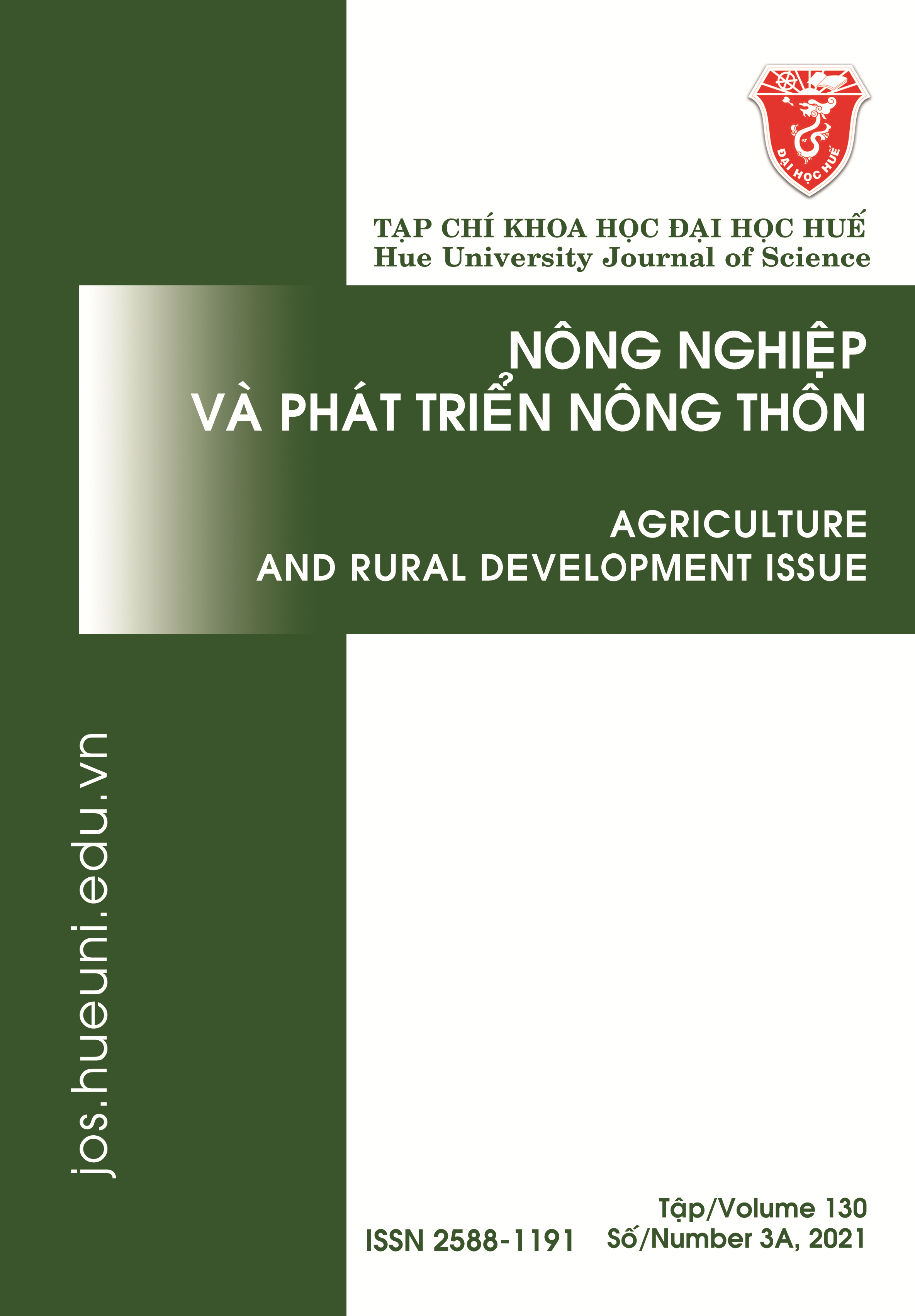Abstract
Community-based tourism (CBT) is expected to bring dual benefits to the local community and environmental protection. However, the CBT is still limited and unevenly developed in Vietnam. The purpose of this paper is (1) to explore the current situation and potential of CBT in Thua Thien Hue province; (2) to analyze the stakeholders related to CBT activities; (3) to find out the obstacles of CBT in practice. The data were collected through secondary documents and literature review. In-depth interviews and focus group discussions were conducted in Hong Ha and Quang Loi communes. The results show that Thua Thien Hue province possesses great potential for CBT development because of the unique nature, historical heritage, and diversity of indigenous cultures. The results also clearly indicate that the number and role of stakeholders in each case are different and uncertain. Both Hong Ha and Quang Loi face limitations concerning the capacity of the government and community. Therefore, for ensuring the sustainable development of CBT, it is necessary to connect the stakeholders closely and facilitate local community values.
References
- UNWTO (2018), UNWTO Tourism Highligts 2018 Edition; Truy cập ngày 15-1-2020 tại https://www.e-unwto.org/doi/pdf/10.18111/9789284419876.
- Mowforth Martin and Munt Ian (2005), Tourism and Sustainability: Development and New Tourism in the Third World. Routledge, London and New York.
- Panos Media Brieding No.14 (1995), Ecotourism: Paradise Gained or Paradise Lost? Truy cập ngày 12-9-2019 tại http://panoslondon.panosnetwork.org/wp
- -content/files/2011/03/ecotourism_paradisepPjNyK.pdf
- Gladstone W.; Curley B.; and Shokri M. R. (2013), Environmental impacts of tourism in the Gulf and the Red Sea, Marine Pollution Bulletin, 72(2), 375–388.
- Scheyvens Regina (2011), Tourism and Poverty. Routledge, London and New York.
- Fennell David (2008), Ecotourism, Third edition. Routledge, London and New York.
- Brohman John (1996), New directions in tourism for third world development, Annals of Tourism Research, 23(1), 48–70.
- Stronza L. Amanda (2010), Commons management and ecotourism: ethnographic evidence from the Amazon, International Journal of the Commons, 4(1), 56–77.
- Mann Mark (2000), The community tourism guide: Exciting Holidays for Responsible Travellers. Earthscan Publication Ltd, London.
- Freeman R. Edward (1984), Strategic management: A stakeholder approach. Pitman Publishing Inc.
- Sebele S. Lesego (2010), Community-based tourism ventures, benefits and challenges: Khama Rhino Sanctuary Trust, Central District, Botswana, Tourism Management, 31(1), 136–146.
- He G. et al. (2008), Distribution of economic benefits from ecotourism: A case study of Wolong Nature Reserve for Giant Pandas in China, Environmental Management, 42, 1017–1025.
- Gow D. David and Vansant J. (1983), Beyond the rhetoric of rural development participation: How can it be done?, World Development, 11(5), 427–446.
- Tosun Cevat (2000), Limits to community participation in the tourism development process in developing countries, Tourism Management, 21(6), 613–633.
- Ngila D. Mutheu (2009), The private sector-community relationship in ecotourism: The case of Umngazi river bungalows. Master thesis. University of Kwazulu-Natal.
- Desai V. and Potter R. (2014), The Companion to Development Studies, Third Edition. Routledge.
- Eja E. I., Otu J. E., Ewa E. E., and Bernadette N. N. (2011), The Role of Private Sector Participation in Sustainable Tourism Development in Cross River State, Nigeria, International Journal of Business and Social Science, 2(2), 153–160.
- Butler W. Richard (2006), The tourism area life cycle vol.1: Applications and Modifications, Channel View Publications.
- Nguyễn Quang Tân, Ubukata Fumikazu, Nguyễn Công Định và Dương Viết Tân (2019), Thực trạng và hạn chế trong quá trình phát triển du lịch dựa vào cộng đồng ở khu vực miền núi huyện A Lưới, tỉnh Thừa Thiên Huế, Tạp chí Khoa học Trường Đại học Cần Thơ, số 55 (chuyên đề: Môi trường và Biến đổi khí hậu)(1), 157–166.
- TTHPPC (2017), Uỷ ban nhân dân tỉnh Thừa Thiên Huế, Báo cáo Nghiên cứu xây dựng cơ chế chi trả dịch vụ môi trường rừng đối với hoạt động kinh doanh dịch vụ du lịch tại tỉnh Thừa Thiên Huế.
- TTHDoT (2019), Sở du lịch tỉnh Thừa Thiên Huế, Báo cáo kết quả du lịch năm 2017 và định hướng phát triển cho giai đoạn 2018–2020.
- USAID (2018), Chiến lược phát triển du lịch sinh thái ở tỉnh Quảng Nam và Thừa Thiên Huế, giai đoạn 2018–2023, Dự án Trường Sơn Xanh, tài trợ bởi USAID.
- Nguyễn Minh Đạo và Trần Quang Bảo (2018), Du lịch sinh thái trong các Vườn Quốc Gia, khu bảo tồn thiên nhiên khu vực Miền Trung và Tây nguyên: Lý thuyết và Thực tiễn. Báo cáo trình bày và đăng trong kỷ yếu hội thảo quốc tế "Bảo tồn đa dạng sinh học và phát triển bền vững khu vực Miền Trung và Tây Nguyên lần thứ I, Phát triển du lịch tại các Vườn quốc gia, Khu bảo tồn thiên nhiên: Cơ sở khoa học, pháp lý và kinh nghiệm thực tiễn" tại Đà Nẵng, ngày 21-07-2018, Tr.14–29.
- Tosun Cevat (1998), Roots of unsustainable tourism development at the local level: The case of Urgup in Turkey, Tourism Management, 19(6), 595–610.

